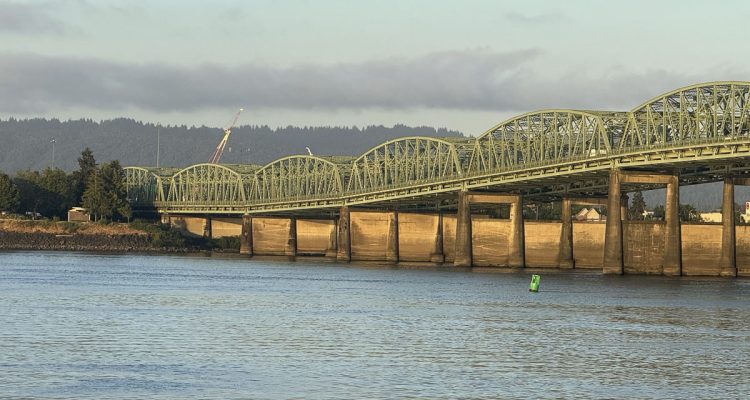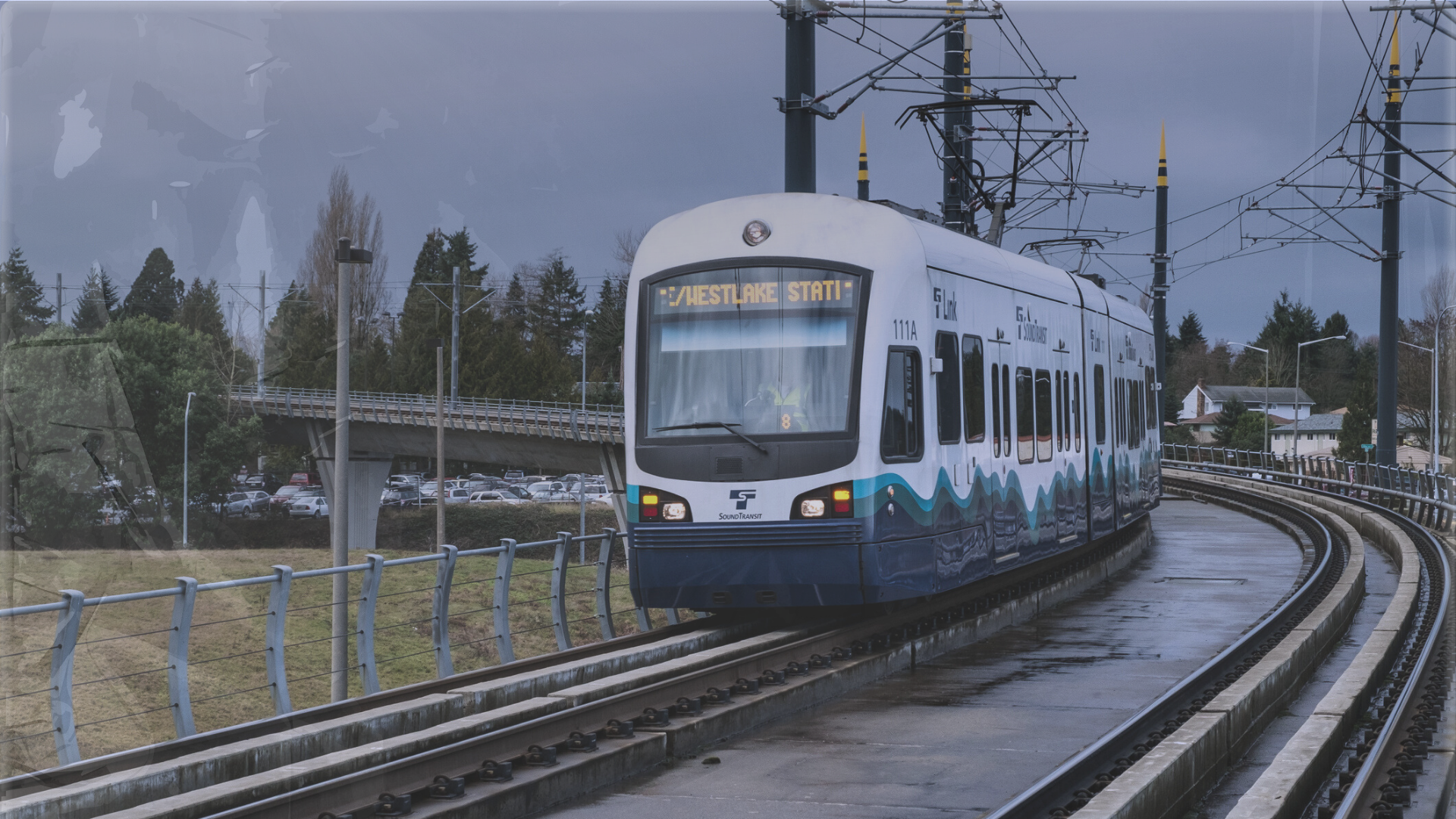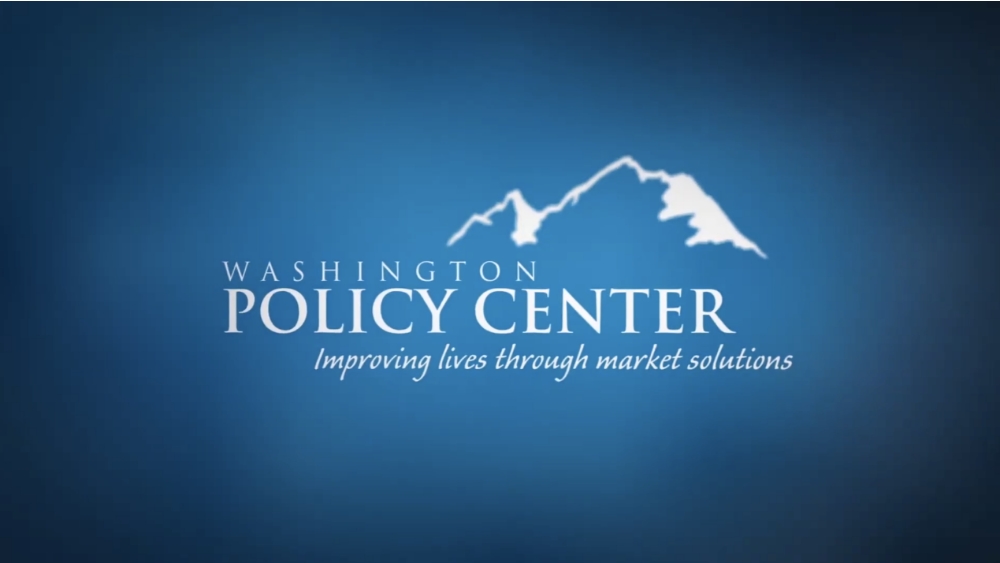Photo by Andi Schwartz
According to ClarkCountyToday.com over the last six years $273 million has been spent on the latest effort to replace the I-5 Columbia River Bridge. That expenditure hasn’t actually built anything, it has funded consultant studies, community engagement, environmental analysis, regional coordination, etc.
Despite that substantial expenditure, updated information for the I-5 bridge proposal remains scarce. The information that has trickled out raises more questions than it answers, and the unanswered questions are serious indeed.
A case in point concerns ridership on the MAX light rail line to be constructed as part of the bridge project. Initial forecasts estimated the two-mile extension across the river would carry between 26,000 and 33,000 riders per day. That would be higher ridership than any of TriMet’s five existing rail lines. The high ridership forecast seemed especially dubious considering ridership on MAX light rail lines was trending downward prior to 2020 before experiencing a steep drop-off with the onset of the COVID pandemic. Since then, the rebound has been weak and ridership shows no signs of returning to the peak levels achieved more than a dozen years ago. In 2024 MAX ridership was still more than 40% below the 2010 total despite the 2017 completion of a seven-mile extension that added seventeen stations.The ridership trend on C-Tran bus service in Clark County also fails to provide encouragement. In 2008 C-Tran buses carried nearly seven million riders, but by 2024 the total had decreased to about 4.7 million. There is no way those long-term trends can be extrapolated to reach the high ridership forecasts that were used to justify inclusion of light rail in the I-5 bridge project.
The project timeline called for completion of the environmental analysis with updated ridership and cost data earlier in 2025. That didn’t happen, but in a recent presentation the project administrator revealed a revised transit ridership estimate of only about 5,000 per day. In response to such weak demand the plan has scaled back service frequency to just four trains per hour. This raises the question of whether the shrinking benefits of including light rail in the project are worth the high cost. That cost is still speculative, but the Federal Transit Administration’s Capital Project Dashboard shows the anticipated cost of the rail line as $1.832 billion. It also indicates the project proponents are requesting a billion-dollar FTA grant to help cover the cost. Nothing builds support among elected officials like the prospect of a huge Federal grant, but it is by no means money in the bank. The new lower ridership numbers, and the possibility of still higher costs, make the project much less competitive for Federal funding, and there is doubt that going forward Federal transit programs will be funded at anywhere near the high levels provided during the COVID pandemic.
Project boosters might argue the old I-5 bridge needs to be replaced so it is worth the price. That may be so, but replacing the bridge doesn’t necessarily require building a costly light rail line. In 2023 a benefit/cost analysis for the project was published that showed, or claimed to show, a positive B/C ratio of 1.51, meaning the expected benefits were slightly more than one and half times greater than the cost. Sounds like a pretty good deal. However, closer inspection of the study reveals a number of curious assumptions. For example, health benefits from the increase in bicycling were assumed to be $6.42 per trip, and walking health benefits an even more impressive $7.20 per trip. Benefits from transit-oriented development were estimated to be $122.8 million. The benefits attributable to “transit amenities” were estimated at $76.7 million, and transit travel time savings at $13.6 million. All of these assumptions improve the B/C ratio and make the project look good, or at least not as bad. Many of the assumed benefits are dependent on the high level of ridership that had been initially forecast. It would be interesting to see what the B/C ratio looks like with updated inputs that reflect more realistic ridership forecasts and updated cost estimates.
The timing of all this has become a bit awkward. In 2026 the legislature will adopt a supplemental transportation budget to fund WSDOT. In past sessions the I-5 Columbia River Bridge replacement project has enjoyed strong support from legislators and the Governor. This time around it isn’t clear the legislature will be quite as enthusiastic about a high-priced project with shrinking benefits, swelling costs, and uncertain Federal funding. To compound matters, both the Washington and Oregon legislatures are facing significant budget gaps for high-priority transportation projects including hundreds of millions of dollars in deferred highway maintenance.
One possibility would be eliminating the light rail line from the bridge project. That would reduce the cost by nearly two billion dollars as well as reducing the complexity of the project and risk of delays and cost overruns. Makes perfect sense, at least on the Washington side of the river, but elected officials in Oregon have consistently demanded the inclusion of light rail, and it isn’t clear they would be willing to consider simply replacing the bridge even though that was the ostensible reason for the project in the first place.
Without updated cost estimates, a completed environmental process and a Record of Decision from USDOT, it will be difficult for the legislature to know how to proceed. The easiest course of action, but perhaps not the most prudent, would be to provide enough funding to keep the project alive for another year to complete the planning process. In effect, spending tens of millions of dollars to kick the can down the road (again). Based on what has already become known it seems highly unlikely that doing so would give the legislature any better options in 2027.





